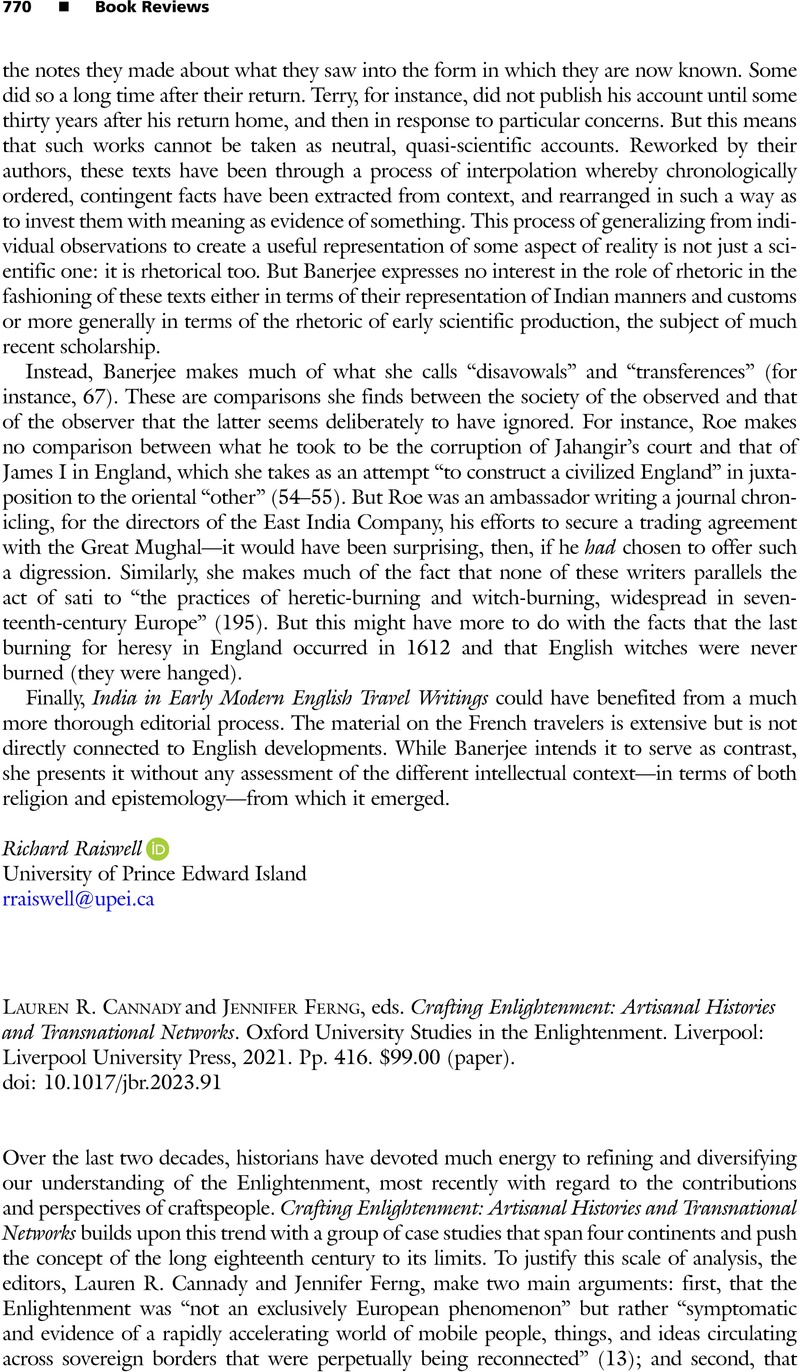No CrossRef data available.
Article contents
Lauren R. Cannady and Jennifer Ferng, eds. Crafting Enlightenment: Artisanal Histories and Transnational Networks. Oxford University Studies in the Enlightenment. Liverpool: Liverpool University Press, 2021. Pp. 416. $99.00 (paper).
Review products
Lauren R. Cannady and Jennifer Ferng, eds. Crafting Enlightenment: Artisanal Histories and Transnational Networks. Oxford University Studies in the Enlightenment. Liverpool: Liverpool University Press, 2021. Pp. 416. $99.00 (paper).
Published online by Cambridge University Press: 25 September 2023
Abstract
An abstract is not available for this content so a preview has been provided. Please use the Get access link above for information on how to access this content.

- Type
- Book Review
- Information
- Copyright
- Copyright © The Author(s), 2023. Published by Cambridge University Press on behalf of The North American Conference on British Studies



